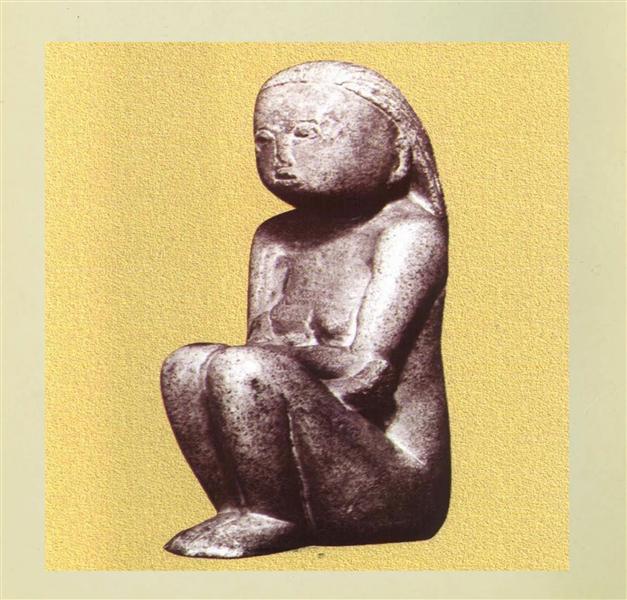Just another WordPress.com weblog
Category: parsing art

“Driveway“ (1872 – 1873)
Vincent van Gogh
________
if a quartet is a piece of music for four instruments,
if a quartet is also a piece of music consisting of
more than one segment of music, movements –
two definitions just to confuse things – a quintet is,
in the same manner, a piece of music written for
five instruments, as well as a piece of music
consisting of more than one segment of music,
as a trio is for three, a sextet, yes, a sextet, is
for six, and so forth
any of these groupings can nevertheless do
nocturnes, tangos, ballades, pieces of music
consisting of only one segment, movements
here is perhaps the most influential quintet of
all time, Schubert’s D956, you will have heard
it, at least some of it, somewhere, probably, as
part of the cultural heritage of the West, should
your heritage be of the West, hearing it is as if
coming upon, musically speaking, any one
of, for instance, Van Gogh’s masterpieces,
see above, we still bathe in its, their,
however subconscious, impact
R ! chard
___________
o, I said, when my flute teacher, an art I’d taken up
too late in life, presented me with a piece I should
learn to play, the second movement of Haydn’s
adagios always remind me of John, I’d read, at
a modest ceremony of remembrance for him,
from a text I’d prepared, which prophetically,
transcendentally, connected me with a
cornucopia of adagios, I’d sought them out,
been consoled, repaired, eventually inspired,
by them, Haydn’s Opus 76, no.1, movement
two, had been a total shoe-in
Haydn is where the history of string quartets
starts in the West, they existed before, but
not formally as a musical format, became
thereafter, however, an identifiable category,
and consequently, imitated
the string quartet, a piece of music written
for four instruments, all string traditionally,
two violins, a viola, and a cello, playing
more than one segment of music,
Classically three, then becoming four,
became a structure that has not even
nowadays lost its appeal, though the
individual combinations might’ve
significantly, since, been altered
Haydn wrote 68 string quartets, which
established him as their spiritual father,
all string quartets devolve from him,
including Beethoven‘s, those of
marvel
R ! chard
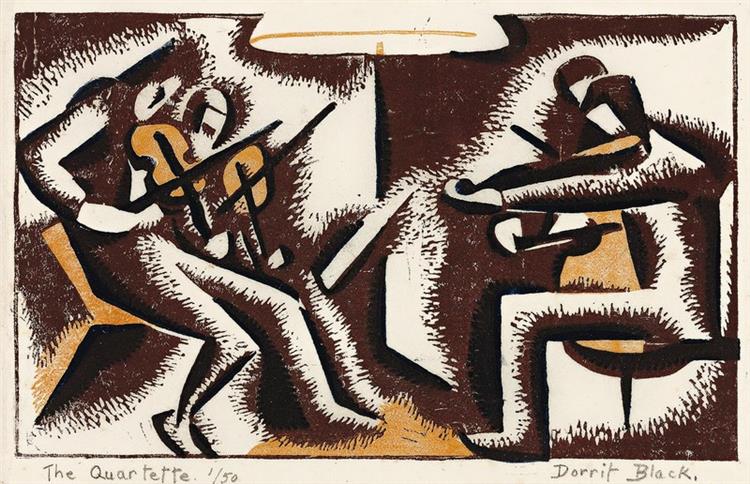
_____
context of my exploring quartets historically, it became
evident to me that Messiaen must’ve been profoundly
influenced by Beethoven’s earlier piece, by over a
hundred years, 1826, 1941, they are so similar
both have a significantly greater number of movements,
beyond the traditional three or four, seven for Beethoven,
Messiaen eight, contrary to the seven I mistakenly
no matter, the extension in either suggests a
longer exploration of the subject, the ebb and
flow of tempo will inadvertently suggest a
trajectory, an elaboration, wth chapters,
perspectives, which is to say, movements,
a journey
the Beatles did the same thing when they put
out Sergeant Pepper, you’ll remember, the
original concept album, to supplant hit singles,
an entirely other, however pertinent, story
both pieces are mournful, strident, suppliant,
Classical imperatives are being tested,
tonality, tempo, repetition
Messiaen, you’ll note, has a less conversational
line, his musical progressions are not linear, but
impressionistic, more textural than Beethoven,
who is more literal, every note is an element, a
noun, an adjective, a verb, in a rational
statement, a sentence
both are, however, saying the same thing, with
equal emotional, and even philosophical, ardour,
just from different corners of our Western cultural
universe, transcending time, meanwhile, and
space, the reach, however nebulous, of our,
nevertheless ever inspired, ancestry
listen
R ! chard
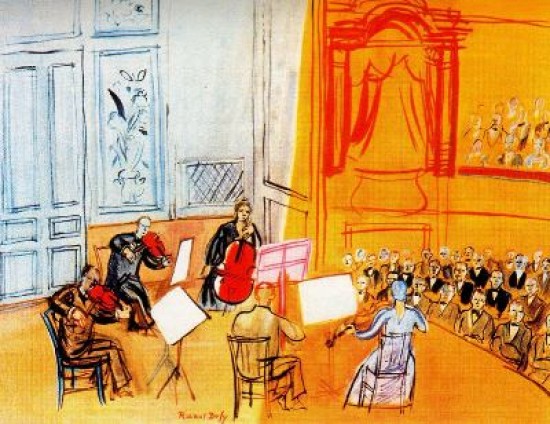
_____
if a trio is a sonata written for three instruments,
a sonata, a piece of music consisting of more
than one segment, or movement, written for
four instruments, is called a quartet
a quartet is also what we call the group itself
of four players
quartets can play more than just quartets, they
can also play waltzes, nocturnes, rhapsodies,
for instance, just as trios, groups of three, can
play more than just trios
but quartets, the form, have had a long and
glorious history, from Mozart and Haydn,
the Classicists, through Beethoven, an
ardent Romantic, to the more political
Shostakovich, enemy, for a time, of his
repressive Soviet state, and on to
Messiaen, who composed his own
concentration camp
let me start with the Messiaen, now that I’ve
whetted your appetite, and work our way back
to Mozart to see where we came from, and
how
there are seven movements in Quartet for
four, atonality abounds, discordant, not
unexpectedly, progressions, repetition also
takes its punches, not easily identifiable
throughout, but tempo, the third pillar of
Western music, more or less holds its
own, keeping the tradition, however
precariously, together, listen
it’s 1941, we’re in a concentration camp,
Messiaen is caught between hope and
despair, give the guy a break, he hasn’t
many absolutes to hold onto, tempo
might be one of them, the heartbeat,
pulse, perseverance, an actual human
pace, a rhythmic instinct, by which
eventually, hopefully, meaning
transpires
hope is in one’s creativity, he says, each
individual answer can be a tribute to
one’s own tribulations, our responses
can be poetry, lessons rather than
invectives, epiphanies rather than
agonies, may the Force, in other words,
be with you, in the face of even the most
trying difficulties, honour can supplant
trials, he concludes, given grace and
integrity
Beethoven says pretty much the same
corroboration
R ! chard
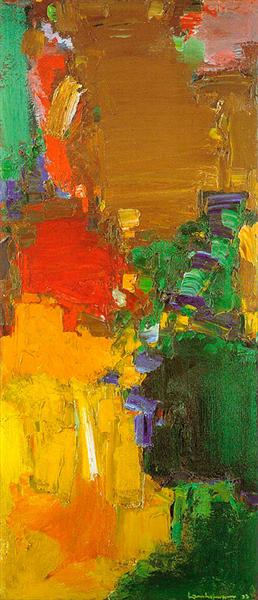
“Rhapsody“ (1958)
________
before putting variations aside, if only
for the moment, let me explain why
this piece, an essential component
in the history of the form in our
Western Classical musical culture,
is not called variations
let me get into it
a set of variations, but even more
so, it’s a concerto, for piano and
orchestra
what’s a concerto, a concerto is a
sonata, a piece of music consisting
of more than one segment, movement,
but written for a full orchestra, and one
central soloist
Rachmaninov has therefore combined
two musical forms, variations and the
concerto, but eliminated the pauses
between the movements, thereby
blocking his path to calling his work
a concerto, which requires identifiable
separate movements
with variations, Rachmaninov asserts
the significance of repetition in our
Western Classical musical structure,
each variation returns us to its source,
making manifest repetition, tradition,
ritual, as primary, as essential to
community, to one-on-one trust
but each variation allows also for a
difference in tempo, another essential
element of the Classical architecture,
these two aspects are therefore in
something of a conflict
tonality, the third essential component
of Classical music, remains essentially
untouched, there are no discordant
episodes
this will happen, but only later
R ! chard
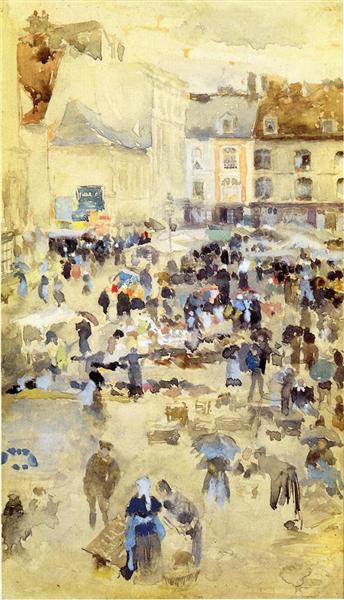
___________
of all the sets of variations, Bach’s Goldbergs
are supreme, they were written, apparently,
harpsichordist of a Russian ambassador to
the electoral court of Saxony, who often
sojourned in Leipzig, one of Bach’s home
fronts, to help him help the count, his
master, however paradoxically, sleep
Glenn Gould made them famous, again, in
1955, for my generation, electrifying the
world with his clinical, rather than
Romantic, interpretation, became, thereby,
a guiding light for me, a metaphysical
mentor, and inspiration
he closed the chapter of his musical
career in 1981, with the same piece
all over again, revisited it, and once
more made musical history, listen
there is no alteration of volume in the
Goldbergs, the harpsichord hadn’t
developed into the piano yet, the
notes fall, however rhythmically
indiscriminately, in a monotone, like
water tinkling from a fountain, soporific
eventually, inducing sleep, like clocks
ticking, or bells ringing from church
steeples, as in every quarter hour
in nearly every European setting,
to help counts, and everyone else
in the vicinity, sleep
R ! chard

______
since I brought up variations in my last instalment,
pieces of music that elaborate on a principal theme,
develop it, transform it, into a variety of moods
and melodic directions, for entertainment, but also,
from the pens of the most fervent composers,
metaphysical edification, I returned, nearly
instinctively, to two sets of variations that changed
my life, became polestars of my moral universe,
for their pursuit of beauty and, consequently,
meaning
I’ll bring one of them up here only, save the other
for its own particular moment, Glenn Gould, a titan
of the Twentieth Century Classical music scene,
extraordinary performance, but a wizardry, the
enchantment, of a poet, a very prophet, an
looking-glass, you come out, with him, a
different person
R ! chard
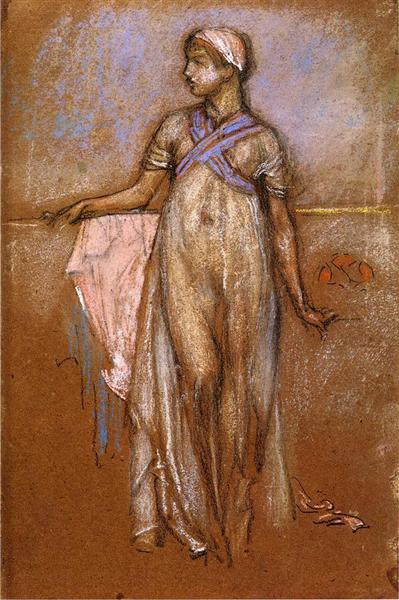
_____________
a trio is a group of three instrumentalists,
most often a piano, a violin, and a cello,
in our Western musical tradition
but it is also a musical form, like a waltz
is, or a prelude, or a nocturne, a trio is
a sonata, essentially, but written for
three instruments, not one, nor two,
consisting of more than one segment,
or movement
though I’ve presented trios as trios to date,
sonatas for three instruments, here’s a piece
for three instruments but in one movement,
though segmented, admittedly, as variations,
see above, a similar collection of rhythms
and styles, brought together by a common
essential element, a game audiences played
back then, and still do even now, trying to
distinguish the individual variations, before
falling prey to their enchantment
R ! chard
_________
the best way to sharpen your aesthetic pencil
is always to put one thing up against another,
then decide which you like best, the outcome
is never right or wrong, it is quite simply a
function of your aesthetic sensibility, the
more you exercise that taste muscle, holding
one element up against another, to compare,
the more you develop an informed, if not ever
conclusive, opinion, which develops eventually
into, if not authority, at least wisdom
what do you want to be when you grow up,
I asked myself in my very early teens, I
want to be wise like my grandmother, I
answered, have I reached my goal, you
tell me, though it is still, and ever will be,
my quest
Beethoven’s “Archduke“, also a trio, his
which do you like best, there is no correct
answer, but your choice will tell you a lot
about yourself
enjoy
R ! chard

“Trio“ (c.1936)
______
November, 2023, but I still abide by the
belief that a sonata a day keeps the
doctor away, so I’ve continued, more
or less, my medicine
but a sonata exceeds its definition, a
piece of music, consisting of more
than one segment, called movement,
for one or two instruments, the second,
should it be included, being harmony
for an instrument that can play only
one note at a time, which is to say,
everything except the piano
but a piece of music written for three,
instead of just one or two, instruments
is also called a trio
a work consisting of more than one
movement, but performed by three,
instead of just one or two, usually
different, instruments, is as well
called a trio, just to confuse you
here’s one, for violin, cello, and piano,
by César Franck, a Romantic composer,
I didn’t expect much, it being, manifestly,
his first composition, Opus 1, No. 1, but it
was part of the program I got tickets for
coming up at our recital society here in
February, I had to investigate
to my surprise, it was, is, magical
R ! chard







